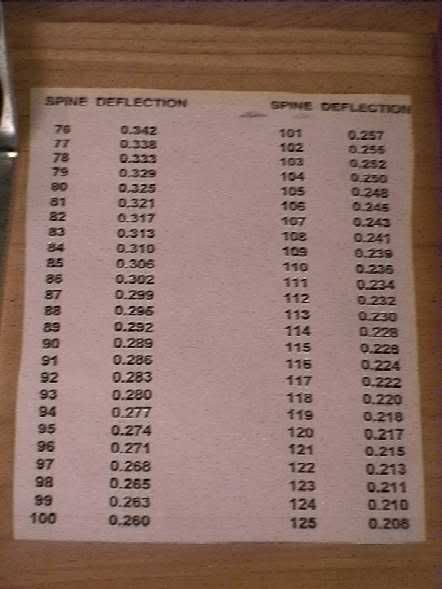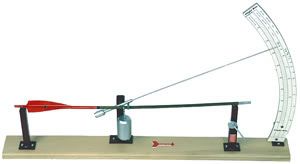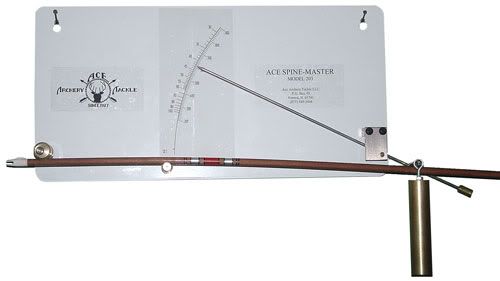I'm probably overthinking this, but is the stiff side the side that doesn't want to stretch, or the side that doesn't want to compress? Do you want the arrow to be at its MOST willing to bend around the bow, or at its LEAST? Hope I'm making sense, and I hope somebody will answer a probably-dumb question... 
Garett
No such thing as a dumb question... If your wondering about something you need to ask.
As far as Archer's Paradox goes, many years ago when I was taught to make arrows out of cedar shafts, it was explained to me that what was desired was finding the orientation with the least willingness to bend and assemble my arrows with the stiffest orientation 90 degrees to the bow.
Also, for better consistency I needed to match my shafts by the amount of bend during a spline test.
There is a chart that lists what weight bow a certain spline number relates to.
Since traditional Spline testing is done with supports set 26" apart and the weight is 2#.... A person should be able to match the spline to what bow weight he is using as long as he is using the standard technique.
This however, is based on a 28" shaft.... A shorter arrow splined to the same numbers as a 28" shaft will actually be appropriate for a heavier bow..... Shorter arrows have a different bending moment than longer ones.
The reciprocal is also true. A longer shaft with the same spline numbers, will be less stiff overall due to its longer bending moment. (Longer shaft is easier to bend because it allows force to use more leverage)
I believe that Archer addressed this in a recent post. I referr you to him for better qualified details.
It was also taught to me that the arrow fletch/ arrow head weight should fit a certain formula so the Archers Paradox vibration node points were as close to the same length from each end...
Arrow Spline, (or Spine as the current archery world calls it), is complicated by the fact that different bows of the same weight, due to grip width, will rest the arrow at different distances from the centerline of the bow.
Since the bowstring applies its force to the centerline of the bow, the farther the center of gravity of the arrow is from that centerline, the larger the side force on the arrow.
(Requiring a stiffer arrow to match the same amount of Archer's Paradox bending as from a less stiff arrow from a narrow handled bow of the same draw weight)
An arrow that shoots well from one bow may not be the right stiffness for another of the same draw weight.
If you are as picky as me, you may want to do some experimenting. However, you would likely have to shoot from a fixed shooting machine as relative long distances to actually detect the difference...
One other quick note: The traditional spline test as I have described above dates back to the middle ages. However, there are other spine testing configurations available to the modern archer.
Supporting one end of a shaft and hanging a weight on the other end, and attaching a pointer that points to a scale on a card is another method that is accurate.....

Traditional Spline Testing Jig.

Spline Chart


There are always several avenues to the same destination.
Hope this helps,
Steve